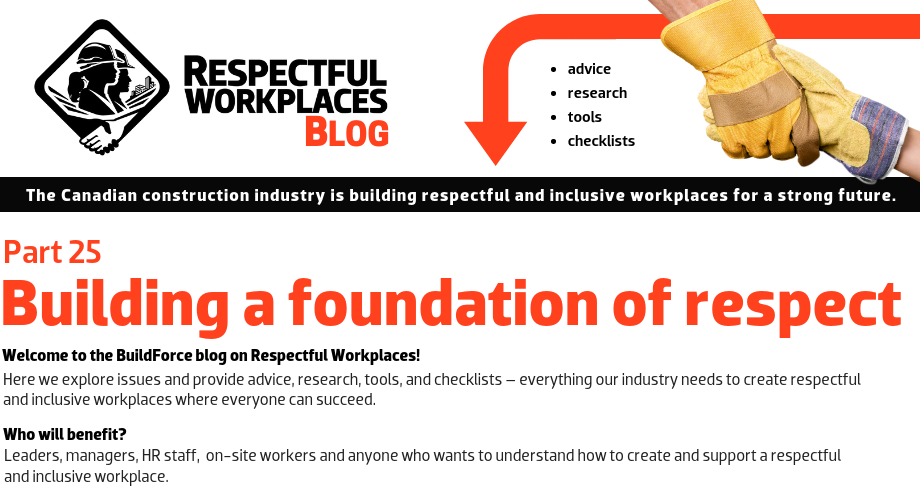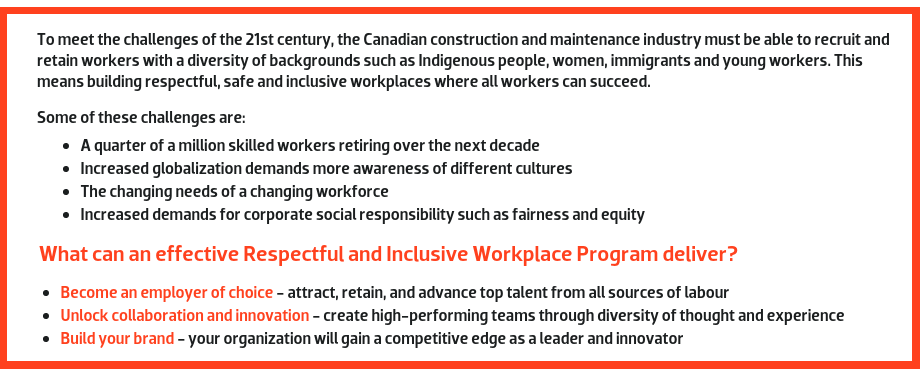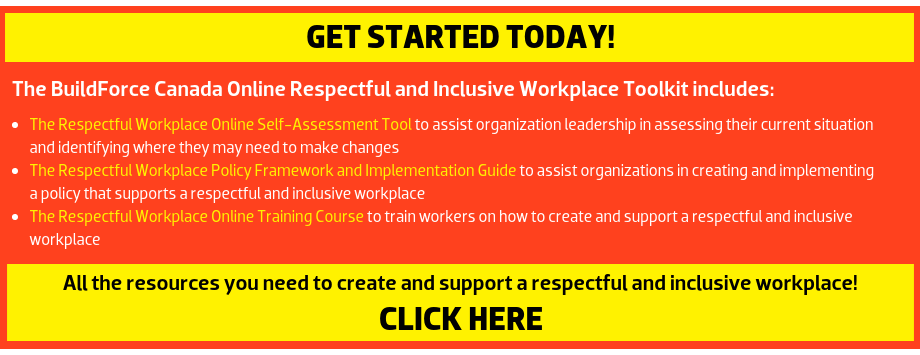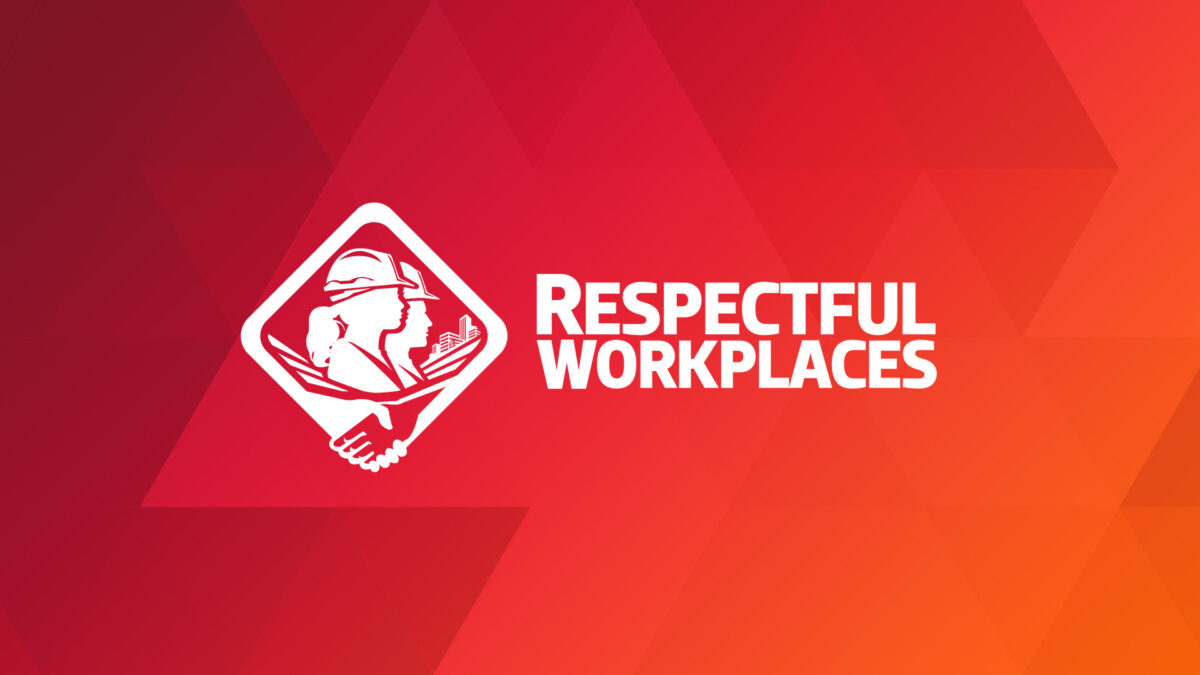
(Each month our feature question explores the content and use of the BuildForce Canada Respectful Workplace Policy Framework and Implementation Guide. This tool is a free template designed to assist organizations in creating and implementing policies that support a respectful and inclusive workplace. This tool is one of three in the BuildForce Canada Respectful and Inclusive Workplace Toolkit.)

Does your organization adhere to an effective Respectful Workplace Policy?
Research shows that effective policies have four key elements in common. In a study to examine why large construction companies have not been successful in attracting and retaining women, researchers found that the failure of formal policies to support the attraction and retention of women related to poor policy design.
The BuildForce Respectful Workplace Policy Framework and Implementation Guide incorporates the four key elements of effective policy design by:
1. Tying policies back to an organizational core value
The Policy Framework establishes respect as a core value, and all policies are based on the core value of respect.
For example, the Policy Framework states that the organization will have a policy covering harassment. Although a policy covering harassment is a legal requirement in many jurisdictions, the organization develops a policy on harassment because it is necessary for a respectful workplace, not simply because it meets the minimum legal requirements.
In addition to developing a harassment policy, it is widely communicated internally and externally through channels such as the corporate website, Value Statements, social media, etc. The policy is supported by procedures that reinforce the elimination of harassment through reporting and mitigation processes, and support of the policy is included as a factor in performance measurement.
2. Including methods to measure results and holding people accountable
For example, there is ongoing review of the number of complaints received about disrespectful behaviour and the steps that were taken to eliminate, reduce, and resolve them.
3. Allowing for flexibility to incorporate lessons learned
For example, the Policy Framework has a process to identify areas of success/failure, and to implement improvements.
4. Allowing for geographic or departmental variations in the implementation
The Guide recognizes that the implementation of the Policy Framework may need to vary in order to accommodate different geographical locations.
For example, respect and inclusion data gathering to support a policy may require different methods for the collection of data at head office versus in the field. This helps to ensure that the Policy Framework is meaningful to all employees regardless of the location in which they work.
For more info:
- Galea, N., Powell, A., Loosemore, M., Chappell, L. “Designing Robust and Revisable Policies for Gender Equality: Lessons from the Australian Construction Industry.” Construction Management and Economics. 2015. Vol. 33, pp. 375-389.







This project has been funded by Status of Women Canada.

Respectful and Inclusive Workplaces

